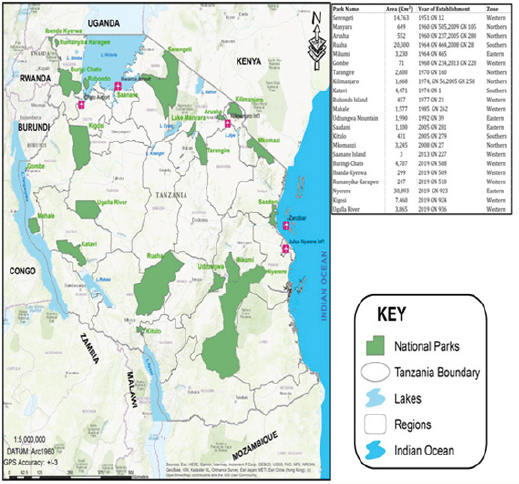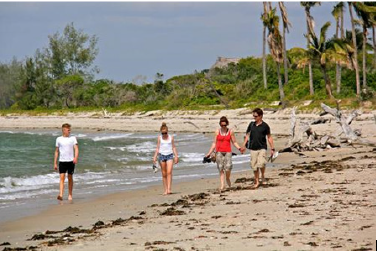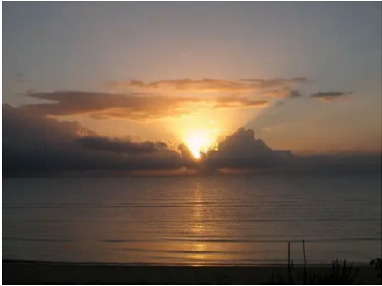- Submissions

Full Text
Examines in Marine Biology & Oceanography
Where the Bush Meets the Beach
Simeon Mesaki*
Anthropology, Tanzania
*Corresponding author: Simeon Mesaki, Anthropology, Tanzania
Submission: September 21, 2021;Published: December 09, 2021

ISSN 2578-031X Volume4 Issue4
Abstract
Tanzania boasts some of the world’s richest and most diverse natural landscapes and biological resources, including several global biodiversity hotspots and areas of particularly high endemism. In fact the country has set aside 40.5% of its land as protected areas, which include national parks, game reserves, a conservation area, forest reserves, marine parks and reserves. This brief lists the 22 national a perk, the year they were established and the reigns they are found in, and finally characterizes the Saadani national park, the only one which bears the nickname “where the bush meets the beach”. The spatial distribution of the parks is parks are also shown in the map below Figure 1 & Table 1. With the exception of one (Kigosi), all parks have been given fascinating nicknames as the table below reveals Table 2.
Figure 1: The spatial distribution of the parks is parks are also shown in the map below.

Source: TANAPA Investment Prospectus 2020.
Table 1:

Table 2:

Source: https://storymaps.arcgis.com/stories/4bf12795a5b44f3482b580e692c465a4.
The Case of Saadani: “Where the Bush Meets the Beach”
Starting as a Game Reserve in 1962, Saadani became the 13th
National Park in Tanzania in 2005.
A. Since the nineties several new areas have been added to
the park, resulting in the Saadani ecosystem that covers 1,100
km2 (around 15km shoreline).
B. From south to north it stretches 69km.
C. Height: the majority of the park is at sea level. Although
the highest point is 350m, most elevations don’t go beyond
40m.
D. Tides: spring tides of up to 1.5m can flow inland.
E. Saadani has a tropical, hot climate with an average
temperature of 25-27 °C all year round (30 °C daytime, 20-24
°C night-time).
Saadani National Park is part of the Saadani ecosystem, an area
of about 2000km2 of relatively intact continuous forest-savannagrassland
mosaic on the northern coast of Tanzania, directly
opposite to Zanzibar. The area is in the centre of the historically rich
triangle of Bagamoyo, Pangani and Zanzibar and the vegetation has
been widely influenced for millennia by human occupation.
https://www.communityconservation.net/people/bruce-downie/
As Depicted by Advertisers”
a) The is a one-of-a-kind paradise where beach life meets
wilderness which gives a tourist not only the opportunity
to plunge into the Indian Ocean straight after his/her
safari, but also to be submerged in a unique display of
both marine and mainland flora and fauna in a naturally
fascinating setting. https://storymaps.arcgis.com/stories/
b4e6adcc88d848b7b7684f393e1ce221
b) Another advertisement states how, “…one gets to relish
the palm trees as they sway in a cooling oceanic breeze….white
sand and blue water sparkle alluringly beneath the tropical sun.
Traditional dhows sail slowly past, propelled by billowing white
sails, whilst Swahili fishermen cast their nets below a brilliant
red sunrise”
https://www.tanzaniatourism.go.tz/en/destination/saadaninational-
park
c) Saadani is where the only wildlife sanctuary in East Africa
to boast for an Indian Ocean beachfront, it as well possesses
all the attributes that make Tanzania’s tropical coastline and
islands very popular with European sun-worshipers. Yet it is
also the one place where those idle hours of sunbathing might
be interrupted by an elephant strolling past, or a lion coming
to drink at the nearby waterhole! https://www.tanzaniaparks.
com/saadani/
d) From East to West, the open ocean with coral reefs
changes to brackish water ecosystem characterized by
mangrove forest, salt pans and bare saline areas. These beaches
are the only place north of Dar-es-salaam where sea turtles still
come to lay their eggs. The most common species is the green
turtle, the largest of the hard-shelled sea turtles. The marine
extension of the park includes the Mafui sandbanks, whose
colorful coral reefs are important breeding sites for many fish
species. Numerous species of fish such as prawns also lay their
eggs in these protected habitats. https://www.tanzaniaparks.
com/saadani/
e) Saadani is a national park that is often overlooked. Its
location is special because it is on the coast, because it is the
only national park where you can combine an adventure safari
with a relaxing stay at beautiful white beaches with many
palm trees. It is allowing you to observe wildlife in a unique
environment. https://tanzania-specialist.com/national-parks/
saadani-national-park
f) Saadani National Park includes three different
environments: the land, the river and the sea. You can walk
through the tropical rainforest, the savannah, the miombo forest
as well as the mangrove forest. https://www.spaziosafari.com/
en/tanzania/parks/2018/09/05/saadani-national-park/
g) Saadani ….” Where river, beach and bush have been thrown
together in a clash of colourful ecosystems found nowhere on
the Eastern Coast of Africa. The park contains distinctive and
rare habitats, (Unique in East Africa) beach with salt grass
flats along the Indian Ocean. One can live at Saadani where
river, beach and bush have been thrown together in a clash of
colourful ecosystems found nowhere on the Eastern Coast of
Africa. However, there is a confusion of nature that crocodiles
vie with coral reefs, lions roar at Lionfish and baboons bound
along the beach. Neatly described in a “Symbiosis of luxury with
nature” the enthusiasm for nature here is infections… On the
coast of Indian Ocean, the park, have unique landform, which
includes several pristine dunes with interesting vegetation
types.
Significance
The significance of the SANAPA is that it is:
A. It is the only protected area in Tanzania with a mix of
terrestrial, littoral and marine resources
B. It is one of the few areas on the East African coast that is
protected and contains species more normally associated with
inland areas
C. It is the only protected area in mainland Tanzania with
marine resources (including dolphins)
D. It protects part of the east African lowland coastal forest
system (Zaraninge) with its rare and endemic species
E. It provides protection for the green turtle
F. It provides protection for estuaries and mangroves which
is rare in east Africa
G. It has the potential to provide a diverse mix of tourism
activities, and it is the only place in Tanzania where this is
possible. This can conceivably benefit adjacent settlements
Exceptional Resources
The known exceptional resources were identified based on the
following criteria:
a) Adjacent marine and terrestrial environments
b) Nesting site of the green turtle (Chelonia midas)
c) Lowland coastal forests
d) Mangrove forests
e) The Wami River and Estuary
f) Proximity to historical and cultural sites along the
Tanzanian mainland and Unguja Island
Although not an “exceptional resource” of the park itself this
aspect of the location of Saadani is something that will attract
visitors to the area and hence is an important facet [1,2].
SANAPA Exceptional Resource Values
The Exceptional Resource Values (ERVs) of Saadani are depicted in the following categories:
Natural
Nesting site of the green turtle
The green turtle (Chelonia midas) nests on the beach between the Madete and Sima rivers. This is one of the few sites along the Tanzanian coastline where this happens. Now that it has been afforded national park status it is the only protected area for the nesting turtles along the entire Tanzanian coastline [3,4].
Lowland coastal forests
The lowland coastal forests are small geographically isolated islands of evergreen or semi-evergreen closed canopy forest, usually on the tops of hill. There are an estimated 200km² of these forests in Tanzania, the largest of which is Zaraninge (approx 25% of the total). Most of the Zaraninge Forest has been included into the Saadani NP. In addition there are other small patches within the park and three good examples just north of the park (Genda Genda, Msubugwe and Garafuno). These forests have not been studied extensively but are already known to be home to some endemic, rare and threatened species of plant and animal life. Elephants are also known to use these forests, especially in the dry season [5,6].
Mangrove forests
Mangroves are endangered all along the East African coastline and there are several good stands remaining under the protection of the Saadani NP, especially in the Wami estuary. This mangrove ecosystem is fed by the nutrient rich waters of the Wami River.
The wami river and estuary
There are few places on the African coast where large wildlife is still present in an estuarine situation. The presence of crocodiles, hippos and other wildlife, which can be seen after a boat ride in the sea is indeed rare. The estuary is also an important area for birds, mangroves and the associated inter-tidal wildlife.
Scenic
Adjacent marine and terrestrial environments: Saadani NP is one of the few sites along the entire African coastline and the only one in east Africa where marine and terrestrial (with wildlife) environments are found next to each other. Human population pressure along the coast is severe and this makes it even more distinctive.
Social
Proximity of the Area to Historical and Cultural Sites along the Tanzanian Mainland and Unguja Island
Although not an exceptional resource of the park itself this aspect of the location of Saadani is something that attracts visitors to the area. The historical and cultural sites along the coast at Bagamoyo, Kaole, Pangani, Tanga, and indeed Saadani itself, are well known. In addition, the island of Unguja (Zanzibar) has a wealth of such sites and all of these contributes to the importance of Saadani as a tourism destination (Figure 2-4).Figure 2: Map of Saadani National park.

Figure 3: Some scenes of SANAPA.

Figure 4: Sunrise over the Indian Ocean at Saadani beach.

Source: Treydte A (2004) Ecosystem studies on the former Mkwaja Ranch and the new Saadani National Park between 2001 and 2004 Tanzania Wildlife Discussion, p. 42.
References
- Baldus D, Roettcher K, Broska D (2001) Saadani an introduction to Tanzania’s future 13th national park. Tanzania Wildlife, Tanzania, p. 30.
- Baldus RD (1999) Where wildlife meets the Indian ocean. Talking About Nature. Dar Es Salaam Guide, Tanzania, p. 15.
- Downie BK (2015) Conservation influences on livelihood decision-making: A case study from saadani national park, Tanzania, University of Victoria, Canada.
- Odongo O (2019) ESIA for the proposed upgrading Tanga-Pangani-Aaadani-Makurunge (229km) road to bitumen standard in Tanga and coast regions, Tanzania
- TANAPA (2009) Saadani national park: General management plan.
- URT (2014) Fifth national report on the implementation of the convention on biological diversity.
© 2021 Simeon Mesaki. This is an open access article distributed under the terms of the Creative Commons Attribution License , which permits unrestricted use, distribution, and build upon your work non-commercially.
 a Creative Commons Attribution 4.0 International License. Based on a work at www.crimsonpublishers.com.
Best viewed in
a Creative Commons Attribution 4.0 International License. Based on a work at www.crimsonpublishers.com.
Best viewed in 







.jpg)






























 Editorial Board Registrations
Editorial Board Registrations Submit your Article
Submit your Article Refer a Friend
Refer a Friend Advertise With Us
Advertise With Us
.jpg)






.jpg)














.bmp)
.jpg)
.png)
.jpg)










.jpg)






.png)

.png)



.png)






